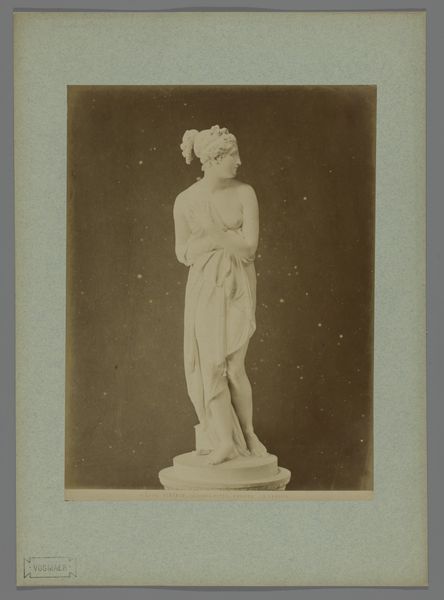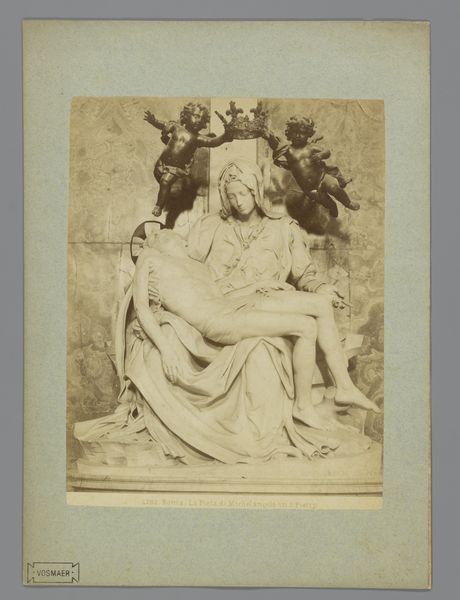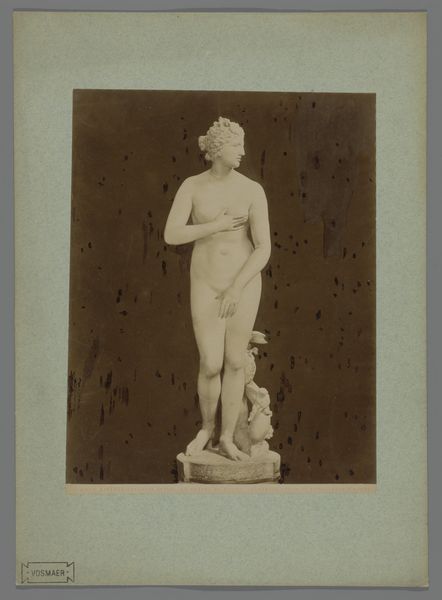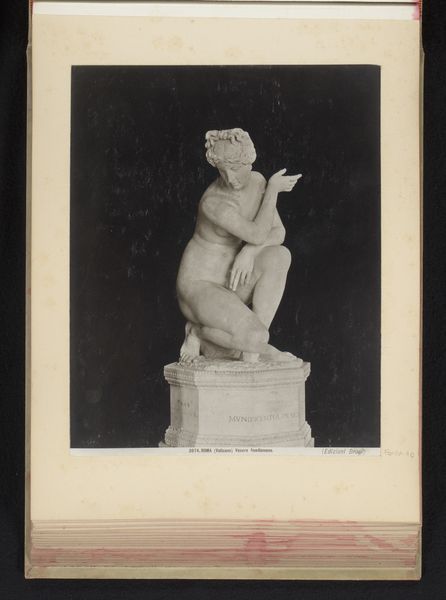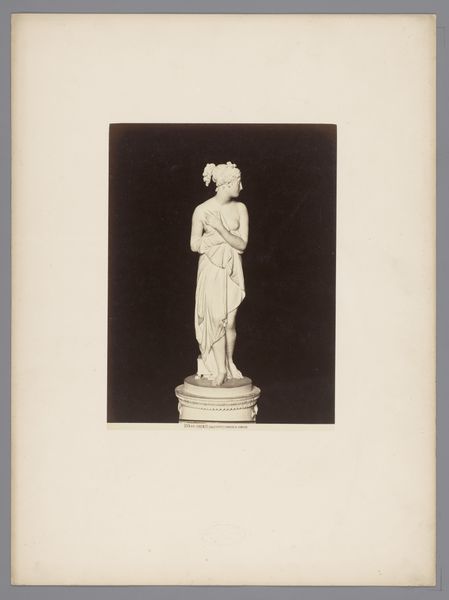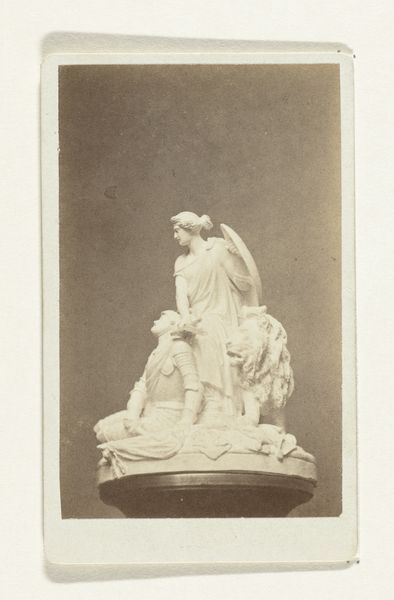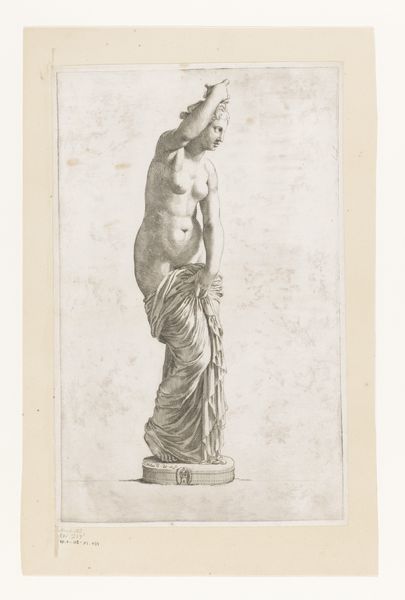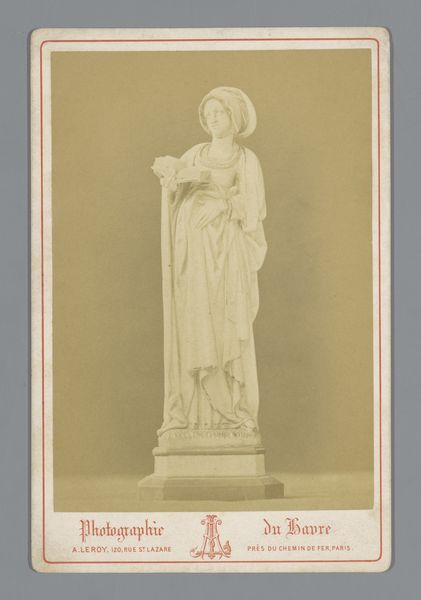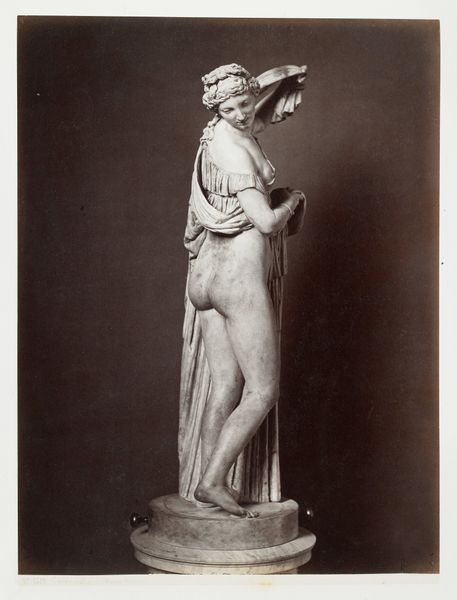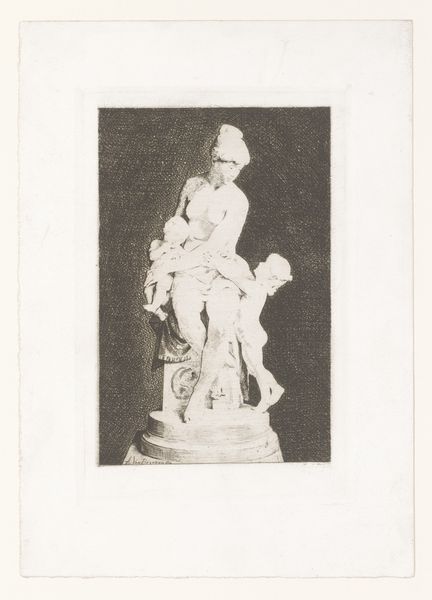
print, photography, sculpture, gelatin-silver-print, marble
#
portrait
#
still-life-photography
#
neoclassicism
# print
#
classical-realism
#
photography
#
sculpture
#
gelatin-silver-print
#
19th century
#
academic-art
#
marble
#
nude
#
statue
Dimensions: height 86 mm, width 57 mm, height 113 mm, width 72 mm
Copyright: Rijks Museum: Open Domain
This is an anonymous carte-de-visite photograph of Canova’s Venus Italica. These small cards, popular in the mid-19th century, functioned as calling cards and were often collected and displayed in albums. The image represents Antonio Canova’s sculpture, itself a commentary on classical ideals of beauty and form. Made in the early 1800s, the sculpture was created to replace the Venus de Medici after it was seized by Napoleon. This photograph, likely produced in Germany, shows how Canova’s interpretation of idealised beauty was disseminated and consumed through mass media. The text at the bottom says "Sculpture and Nature", and the mass reproduction of sculptures in photographic form allowed for a wider audience to engage with art, blurring the lines between high art and popular culture. Understanding this image requires attention to the histories of photography, sculpture, and the circulation of artistic ideas. A study of 19th-century photographic archives, museum records, and collections of cartes-de-visite would provide more insight into the photograph’s creation, distribution, and reception.
Comments
rijksmuseum about 2 years ago
⋮
The meaning of ‘Sculptur und – Natur’ (Sculpture and Nature) goes without saying. A semi-clad woman in the same pose as Canova’s Venus Italica is surprised by a male visitor. However, he fails to notice the child at play. The New Year’s greeting on the back advises to above all choose the proper front door. The maker of this card thus used Canova’s famous sculpture as a cover for his naughty depiction.
Join the conversation
Join millions of artists and users on Artera today and experience the ultimate creative platform.
